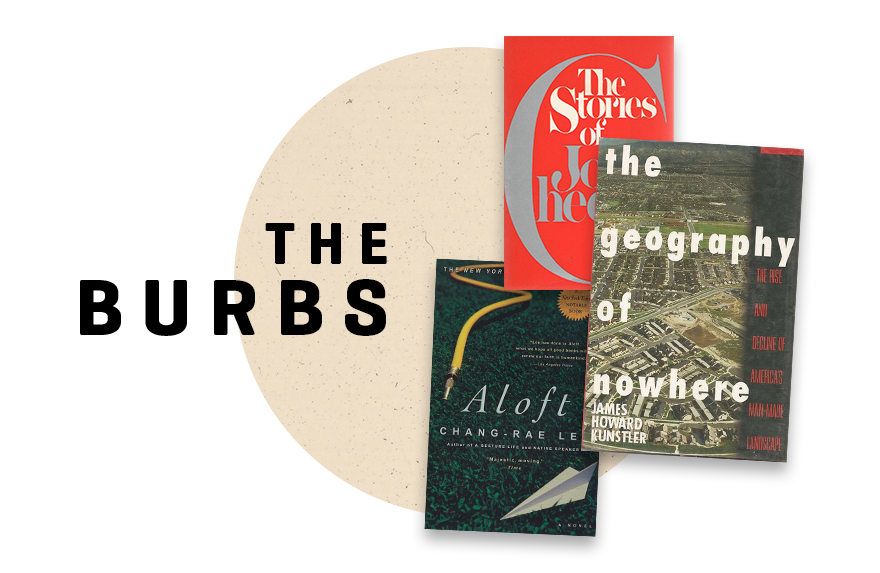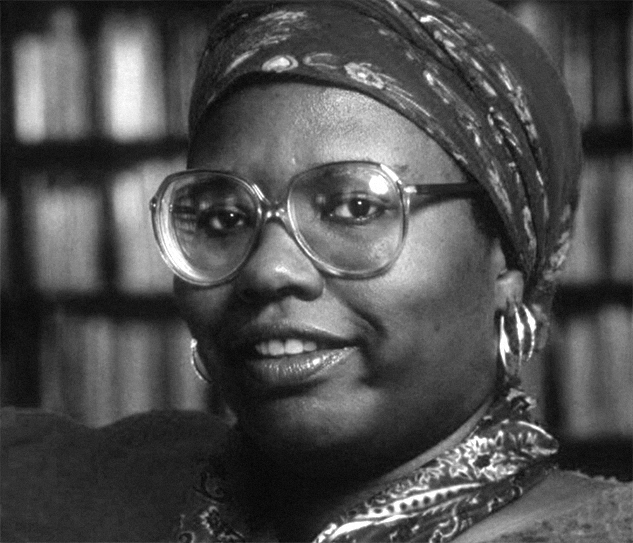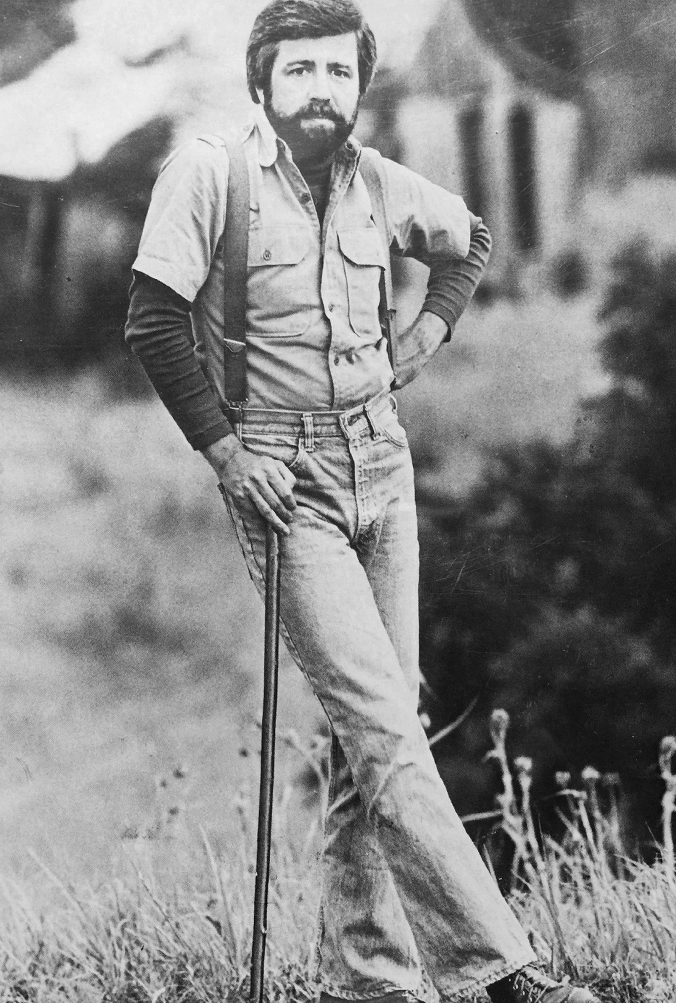At Wildsam, we believe the best writing can leap off the page and chart a path to the horizon. So we decided to gather our favorite books that go the distance—a list of 50 essential reads that pull you deep into the landscapes of America.
The big city. The deep woods. The frozen north and stickiest swamp. The Rambler’s Guide is a cross-country collection of literary adventures.
BUY LOCAL AND Ramble on.
The Flamethrowers
by Rachel Kushner (2013)
Heady tidings of art, love and radicalism in ‘70s NYC capture the hothouse magic of a peaking creative scene. A compulsive read, every page brimming with news.
The House on Mango Street
by Sandra Cisneros (1984)
Told in varying vignettes, this Chicano classic reads like sifting through a box of snapshots—or scrolling through an Instagram feed. Simple it’s not, though, as Esperanza awakens to the nature of womanhood in her poor Chicago neighborhood.
Another Country
by James Baldwin (1962)
Baldwin’s essays get the glory, but this haunting novel of the precarity and electricity of city life caused a major stir on its release—after taking its author decades to write. Sex, race, music, failure, death and glory swirl in a bebop fugue.
AN EXCERPT
Open City
by Teju Cole (2011)
“... I took a detour and walked for awhile in Harlem. I saw the brisk trade of sidewalk salesmen: the Senegalese cloth merchants, the young men selling bootleg DVDs, the Nation of Islam stalls. There were self-published books, dashikis, posters on black liberation, bundles of incense, vials of perfume and essential oils, djembe drums, and little tourist tchotchkes from Africa … Around the corner of St. Nicholas Avenue, the drivers of the black livery cabs gathered, smoking cigarettes and talking, awaiting fares they could pick up off the clock.”
SHELF TALKER
Slouching Towards Bethlehem
by Joan Didion (1968)
“From the Haight to LA, out to New York, back to Cali—Joan D. roams a roiling ‘60s nation with merciless eye and icy-hot prose. These essays freeze-frame midcentury moments, but to read for nostalgia is to miss a totally relevant manual on how to observe, reflect, and write. The hot pinks of the vintage covers look boss on the shelf, too.”
–ZACH DUNDAS
Gilead
by Marilynne Robinson (2004)
A dying pastor writes to his young son, and we are drawn into a solitary life marked by heartbreak and redemption. An episodic tale set in fictionalized Iowa weaves together life stories, to an effect both quiet and thrilling.
Jayber Crow
by Wendell Berry (2000)
Kentucky poet-prophet Wendell Berry has spent a career in close study of agrarian life. In this novel, we follow the town barber of tiny (and fictional) Port William, with writing that sings like a spring creek and a beautiful gut-punch of an ending.
Sula
by Toni Morrison (1973)
Nel and Sula meet as children in a small Ohio town. One becomes an important community figure, the other a pariah. To Ferrante fans who haven’t yet read Sula: Welcome. No one brings the complexity of female friendship to life on the page quite like Morrison.
AN EXCERPT
Wise Blood
by Flannery O’Connor (1952)
“Where you come from is gone, where you thought you were going to never was there, and where you are is no good unless you can get away from it. Where is there a place for you to be? No place. Nothing outside you can give you any place."

SHELF TALKER
Long Division
by Kiese Laymon (2013)
“The last time I saw Kiese Laymon speak, he stood on the porch at Rowan Oak, William Faulkner’s home in Mississippi. By the end, people had unconsciously hunched forward into crescents or leaned as far back as their chairs would let them. His words, whether you hear or read them, suck you in and blow you away. You don’t leave them in the same position you sat with them, literally or mentally. Their force is unrelenting in this transhistorical novel about two black teenagers time traveling in Mississippi—just one of his works that illuminates the modern South.”
–HANNAH HAYES
The Stories of John Cheever
by John Cheever (1978)
Cheever’s stories burnished the affluence and emptiness of suburbia in the American psyche. Start with “The Swimmer” and glide on through these tales of family drama and the cracks in the white picket fence life.
Aloft
by Chang-Rae Lee (2004)
A middle-class Italian-American man in Long Island continually escapes from his life and family by flying his own plane, a physical reflection of his emotional absence—until a series of crises forces him to confront all that he’s been hovering above.
Linden Hills
by Gloria Naylor (1985)
In this allegorical novel, Naylor transposes Dante’s Inferno to an upper-middle-class black suburban community. The result is a cautionary tale about how racism affects the American Dream.
AN EXCERPT
Holy Land: A Suburban Memoir
by D.J. Waldie (1996)
“The critics of the suburbs say that you and I live narrow lives. I agree. My life is narrow. From one perspective or another, all our lives are narrow. Only when lives are placed side by side do they seem larger.”
SHELF TALKER
The Geography of Nowhere
by James Howard Kunstler (1993)
“A book for nerds—deep down, it’s about zoning—but what an entertaining book for nerds. Kunstler’s pugnacious account of American development goes back to the Mayflower and brawls its way into the 20th Century exurbs, doing its damndest to smack someone in the jaw in every paragraph. The gadfly early-’90s take suburban cultural malaise may be slightly dated, but grumpy Jim’s analysis of our nation’s construction will stick with you on every offramp.”
–ZD
Deep Creek
by Pam Houston (2019)
Pam Houston is an adventurer, but always comes home to her life’s real adventure: her 120-acre ranch. Deep Creek is a love letter to the place that continually heals her and the aspen-dappled high country that shelters it.
Affrilachia
by Frank X. Walker
How many poetry collections A) coin a word, and B) launch a movement? Walker’s verse exploration of the black Appalachian experience galvanized a generation’s worth of writers determined to give voice to an essential dimension of culture and life in those hills.
The Outlaw Album
by Daniel Woodrell (2011)
Few writers navigate the Ozarks’ mud, meadows and mountains like Daniel Woodrell. The Winter’s Bone author’s collection unfolds 12 country-noir tales that—despite grotesque violence involving squirrel rifles and pickaxes—endear the land and its people.
AN EXCERPT
The Mountains of California
by John Muir (1894)
“I came to the foot of a white cascade that beats its way down a rugged gorge in the cañon wall, from a height of about nine hundred feet, and pours its throbbing waters into the Tuolumne … What a fine traveling companion it proved to be, what songs it sang, and how passionately it told the mountain's own joy! Gladly I climbed along its dashing border, absorbing its divine music, and bathing from time to time in waftings of irised spray.”

SHELF TALKER
Wind from an Enemy Sky
by D’arcy McNickle (1978)
“This snapshot of ‘30s Montana has grassroots-canon status in my Big Sky home. McNickle—Salish-Kootenai citizen, Oxford classicist—evokes both sweet, tenuous freedom and unbearable tension in a traditional Native camp facing modernity’s bright ideas (and accompanying destruction). ”
–ZD
The Heartbeat of Wounded Knee
by David Treuer (2019)
A history of Native America after the South Dakota massacre smashes stereotypes, aglow with hope and rage. Bracingly ornery.
A Sand County Almanac: And Sketches Here and There
by Aldo Leopold (1949)
These essays, Leopold writes, are “the delights and dilemmas” of those who can’t live without wild things. The renowned conservationist’s own love of the land blooms across each page.
O Pioneers
by Willa Cather (1913)
In a Nebraska town just trying not to blow away, tempestuous romance, family dynamics and immigrant striving weave together so many American threads.
AN EXCERPT
A Thousand Acres
by Jane Smiley (1991)
“At the time of the pig roast, it was still rankling my father that Harold suddenly, in March, and without telling my father ahead of time, bought a brand-new, enclosed, air-conditioned International Harvester with a tape cassette player, for playing old Bob Wills recordings over and over while working in the fields … but the real bone of contention was … that he hadn’t divulged how he’d financed the purchase, whether cold out of savings and last year’s profits (in which case he was doing better than my father thought, and better than my father), or by going to the bank.”
SHELF TALKER
The Solace of Open Spaces
by Gretel Ehrlich (1985)
“Through vivid description of the sagebrush steppe and incredible economy of language, these essays transport the reader to rural Wyoming and provide a window into the independence and quiet tenderness of the people who call its open spaces home. I’ve turned to this short but powerful book again and again, and I’m always amazed by how beautifully the stark landscape unfurls across its pages.”
–RW
Red: Passion and Patience in the Desert
by Terry Tempest Williams (2001)
An eloquent and meditative argument for the preservation of Utah’s red rock country, Red is perhaps this desert writer’s most desert-y book.
Dissolve
by Sherwin Bitsui (2018)
Bitsui’s poetry powers radical wordsmithery with Navajo cultural energy, jumpstarting an electric vocabulary of stark, sharp-edged images.
The Land of Little Rain
by Mary Austin (1903)
First published over a century ago, Austin’s stories of the Mojave’s people, plants, places, and oppressive heat still resonate.
AN EXCERPT
The Anthropology of Turquoise: Meditations on Landscape, Art, and Spirit
by Ellen Meloy (2002)
“An attraction to a certain turquoise, even to the color of the ubiquitous artificial stones, is subjective. The craving for turquoise is universal. Turquoise is capricious, it is alluring, no one leaves the Southwest without it, although its life seems to flee from it when it is removed from the bare, blood-red sandstone of its native land.”
SHELF TALKER
BATTLEBORN
by Claire Vaye Watkins (2012)
“Ranging widely across time and perspectives, these stories crumble the myths of the American West to paint an unsentimental portrait of the ‘battle born’ state. The storytelling is deft and varied, melding history and invention into something that feels ‘true’ in the way the best fiction does. Fans of Cormac McCarthy and Annie Proulx alike will feel at home in Watkins’ Nevada desert.”
–RW
Casting Deep Shade
by C.D. Wright (2019)
Published posthumously, these genre-bending poems form a kind of “memoir with beech trees,” reflecting Wright’s decades researching and wandering among them.
Braiding Sweetgrass
by Robin Wall Kimmerer (2013)
With wisdom and grace, Kimmerer, a botanist and member of the Potawatomi Nation, shows how Indigenous knowledge and science can be woven together to broaden our ecological consciousness.
American Primitive
by Mary Oliver (1983)
Mary Oliver had a gift for attunement to the most quietly beautiful moments of the natural world. Her simple yet perceptive poems connect and console.
AN EXCERPT
A Pilgrim at Tinker Creek
by Annie Dillard (1974)
“A tree stands there, accumulating deadwood, mute and rigid as an obelisk, but secretly it seethes; it spits, sucks, and stretches; it heaves up tons and hurls them out in a green, fringed fling. No person taps this free power; the dynamo in the tulip tree pumps out ever more tulip tree, and it runs on rain and air.”
SHELF TALKER
The Overstory
by Richard Powers (2018)
“Beginning, fittingly, with their ‘roots,’ The Overstory follows nine characters, whose relationships with trees cause their lives to become increasingly intertwined. An impressive feat of storytelling with thrilling (yes, really) dashes of natural science, the book navigates environmental activism with more grace than preachiness. This is an immersive reading experience, and you’ll want to savor it.”
–RW
This Is Paradise
by Kristiana Kahakauwila (2013)
Raw, vivid short stories flip perceptions and stereotypes of Hawai’i on their heads. For narratives that match the real place’s beguilingly rough cultural textures, start here.
The Sea Around Us
by Rachel Carson (1951)
Perhaps lesser known but more lyrical than Silent Spring, the naturalist’s immersion into her first-love subject translates science into deeply poetic—almost preacherly—cadences.
Salvage the Bones
by Jesmyn Ward (2011)
Hurricane Katrina is inbound. In a densely peopled house in Bois Sauvage, a small place with deep stories on the Mississippi coast, the children work to prepare, mostly on their own. What does ready look like?
AN EXCERPT
Jaws
by Peter Benchley (1974)
“A hundred yards offshore, the fish sensed a change in the sea’s rhythm. It did not see the woman, nor yet did it smell her. Running within the length of its body were a series of thin canals, filled with mucus and dotted with nerve endings, and these nerves detected vibrations and signaled the brain. The fish turned toward shore.”

SHELF TALKER
Barbarian Days
by William Finnegan (2015)
“A personal memoir, a sportsman’s notes, a subterranean (subaquatic?) cultural history: Finnegan’s decades-spanning surfers’ story is all this, plus a seduction to those of us who never made it past boogie boards. His wave descriptions veer technical; his wanderings touch many shores, notably in California, Hawai’i, and New York City. Here’s what surfing gave him (and, via this book, us): a hot-blooded take on cold, cold water, to the tidal beat of global change.”
–ZD
Lost Children Archive
by Valeria Luiselli (2019)
Amid a surge in unaccompanied migrant children in the U.S., a family drives from New York to the Mexican border, turning the tropes of the American road story inside out in the process.
The Warmth of Other Suns
by Isabel Wilkerson (2010)
A massive feat of narrative nonfiction, this book weaves together the journeys of three of the African Americans who left the South during the Great Migration to seek a better life.
Blue Highways
by William Least Heat-Moon
A 1975 Econoline. A backroads map. A good-sized continent to get lost in while you figure out your stuff, plus a flair for description. Could do worse.
AN EXCERPT
Norwood
by Charles Portis (1966)
"Norwood rode to Texarkana early Sunday morning in the rain with a boy in a butane truck who had a date over there for church. He wore his black hat, the brim curled up in front to defy wind resistance, and his stovepipe boots. One trouser leg was tucked in and the other hung free, after the fashion. The boots were glorious. He had his sunglasses on too, and his heavy Western belt buckle, which portrayed a branding scene in silver relief. Apart from those stylish items, he was not really dressed up.”
SHELF TALKER
A Field Guide to Getting Lost
by Rebecca Solnit (2005)
“When I really love a book, my reading habits get embarrassing: scrawling a heart in the margin beside a sentence that stirs up big feelings, writing an emphatic 'YES' when some idea rings deeply true. My copy of this book is full of such markings. The way Solnit describes wanderlust and long drives, vast landscapes and country songs—all of it: heart, YES. I love getting lost with Solnit. I’d follow her anywhere.”
–RW
THE SWAMP
Florida
by Lauren Groff (2018)
In the dense, damp heat of Florida, mothers prowl streets and suffer concussions, sinkholes and snakes threaten, children fend for themselves on islands. This is climate fiction with a bite.
THE RIVER
Mississippi Solo
by Eddy Harris (1998)
What, you thought we wouldn’t canoe the Mississippi from Minnesota to New Orleans? By turns funny, lyrical, and harrowing, Harris tells the literally singular experience of a solo African-American adventurer on the archetypal national journey.
THE NORTH
Coming Into the Country
by John McPhee (1976)
With his usual dry wit and vivid descriptions, McPhee offers a vast, complex portrait of Alaska appropriate to the vastness and complexity of the place itself.
AN EXCERPT
THE RAILS
Strangers on a Train
by Patricia Highsmith (1950)
“Guy went back to his book, but the other’s obtrusive boredom … kept him from concentrating. Guy contemplated going to the diner, but for some reason sat on. The train was slowing again. When Bruno looked as if he were going to speak, Guy got up, retreated into the next car, and leapt the steps to the crunchy ground before the train had quite stopped. The more organic air, weighted with nightfall, struck him like a smothering pillow.”

SHELF TALKER
THE FARM
East of Eden
by John Steinbeck (1952)
“Besides being a contender for Great American Novel status, this Steinbeck classic is also where Wildsam gets its name. Sam Hamilton is an Irishman living on a dried-up spread in Salinas Valley of California. He is a dreamer, wide open to mysteries, literally the where-is-water divining rod of this big-hearted epic. At its best, the novel has that magical touch as well, exploring the deep deeps of the human experience. And for those already fans: Should you read it again? Thou mayest.”
–TAYLOR BRUCE
AT WILDSAM, WE ADORE INDIE BOOKSELLERS. THERE’S LITTLE BETTER THAN WANDERING INTO A LOCAL BOOKSHOP AND GETTING A REC STRAIGHT FROM FOLKS WHO KNOW THE PLACE BEST.
IF YOU’D LIKE TO BUY LOCAL & ONLINE, TRY BOOKSHOP.ORG, A NEW ONLINE PLATFORM IN SUPPORT OF INDIES ACROSS AMERICA.
EDITED BY ZACH DUNDAS & REBECCA WORBY
DESIGNED BY ALAN KAHLER




























